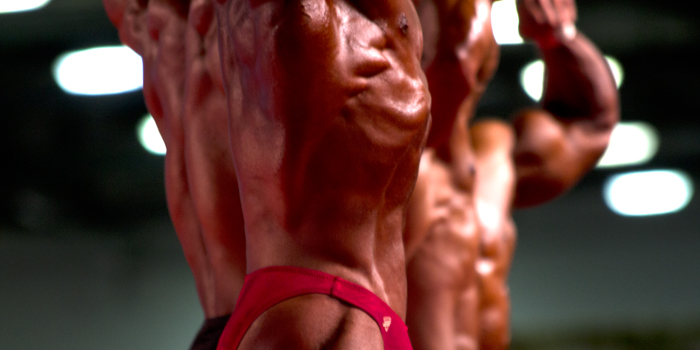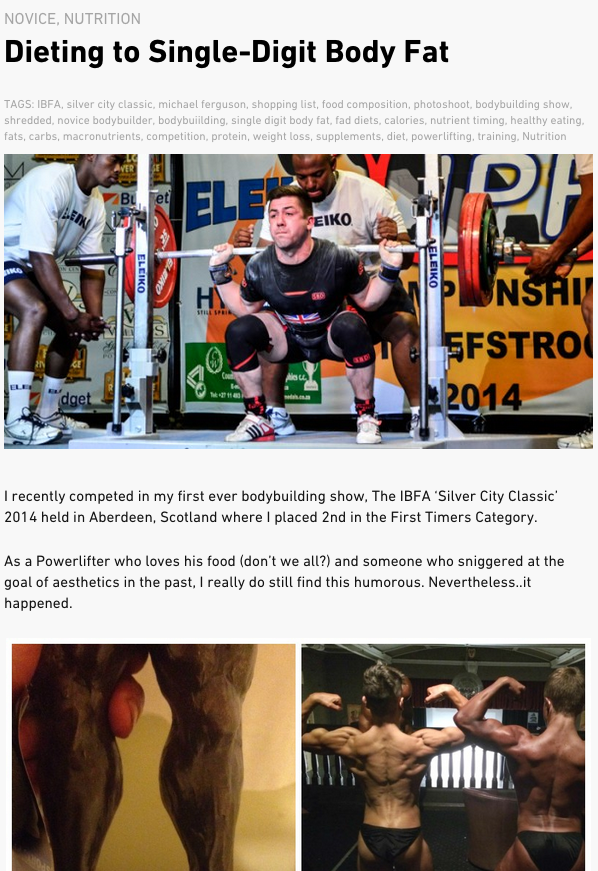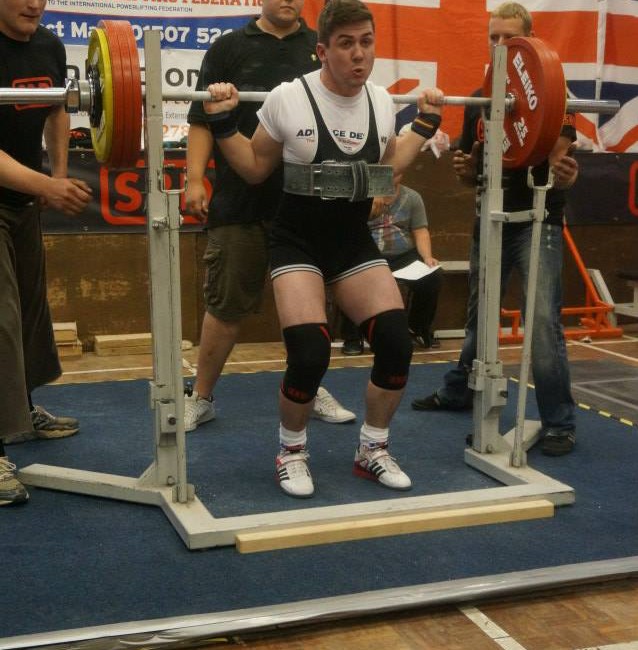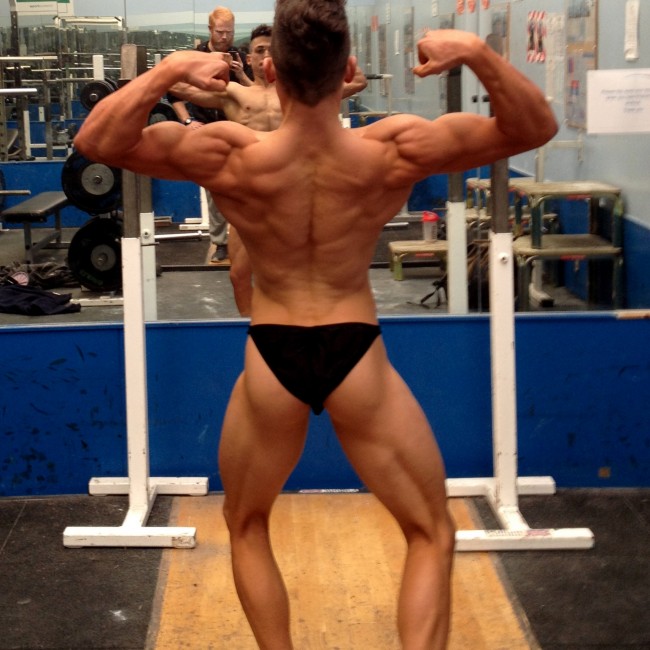
In November 2014, I competed in my first ever natural bodybuilding show, the IBFA 'Silver City Classic' held in Aberdeen, Scotland. In my first feature article for elitefts™, I discussed the lessons I learned about dieting and provided a cut-the-shit guide to dieting to single-digit body fat.
I had a significant amount of feedback for writing about my own personal experience in preparation for this bodybuilding show from what my macronutrients and calories were like and how I trained to my overall experience of the show. In this three-part article series, I'll delve into these very matters.
As with my last article, there's a caveat. Whether you're in the natural, light weight or novice category, don’t expect something that you won’t get. This was my experience. Essentially and critically, many of the principles will still apply to anyone whether you're 140 kg or 70 kg in body weight.
Introduction
We’re now in April 2015, and since the show in November 2014, I've been focusing on getting my powerlifting back up and beyond. This is all in preparation for my first competition of the year in June. Reflecting back to the bodybuilding show makes me slightly cathartic. It’s quite surreal looking back to the changes that I made to my physique, as if I somehow couldn’t achieve the aesthetics that many desire or get in the best shape I’ve personally attained through my 23 years of existence.
Instead, I found out that these things are very much possible if, of course, you want it bad enough. Perhaps this could be you, an average person (recreational trainee, powerlifter, Olympic weightlifter) with a desire to get in good enough shape to compete in a show or even just get in the best shape of your life.
I’d like to point out that it’s simple to do. Pretty much anyone can diet to single-digit body fat for aesthetics or competition. Simple, of course, doesn't mean painless. It demands a synergy of will, determination, persistence, fidelity and some knowledge. To go that step further and become a high level natural bodybuilder is the harder part, and I’m in no position to comment on that.
In this series of articles (in this part along with the second installment), I'll outline the process that I used to reach contest shape over the three or four months before the show. The third part will address the show itself, how I fared and my thoughts on bodybuilding. I hope this series will give you insights on how you could do it as well and to a better standard than I did. Buckle up and we'll begin.
Why
Too many people have asked me why I bothered committing to a bodybuilding show in the first place when it really represented the polar opposite of my attitude and goals pre-hip injury, so I’ll lay it out plain and simple. Some of these reasons may be mutually inclusive for you as well:
- My hip injury had stopped me from being able to do any worthwhile heavy training on the squat and deadlift movements. As a powerlifter, this is the furthest from ideal that you can get.
- Because of the first reason, I needed direction. I needed to stop beating a dead horse if you will. I’m very goal driven (as I’m sure all of you reading this are). I needed something that wouldn’t hinder my injury and make it worse while I was trying to get back to 100 percent. Bodybuilding was now this goal.
- I've always respected the extreme discipline that bodybuilders epitomize, so I wanted to experience the process and find out what it really takes.
- I wanted to tick the box.
How
How did I approach the daunting task of constructing a plan for bodybuilding when it was so incongruous to me? I had very poor knowledge of bodybuilding nutrition and bodybuilding itself. One might say that I was ignorant to it all.
To try and rectify this, I had to do a significant amount of background reading as well as correspond with friends in the know. My close friend and fellow lifter Sam Bingham and I discussed at length and programmed my diet and training before it was time for me to grow a pair and begin the journey. In advance, I want to extend my thanks to Sam for his time and effort throughout the process. His support, accountability and unwavering belief in me over the duration of the experience made all the difference. This is why having a coach can be instrumental. If you had bore witness to our email messages back and forth, you wouldn't know what to think with all the progress photos being sent through.
- Phase 1 of the process took me from 75 kg to 72.5 kg body weight for the IPF World Classic Powerlifting Championships in South Africa in 2014.
- Phase 2 then moved my body weight from 72.5 kg on June 13 to 69.3 kg on July 8, 2014.
- Phase 3, and the one I'll address here, is where I pushed my body weight from 69.3 kg on July 9 down to 62.3 kg the morning of the show on November 9, 2014.
Figure 1: Thinking that maybe I should've stuck to this sport…
My Diet
So I'll detail the process and what was involved. For shedding body fat, it is generally accepted that your diet is ‘the one.’ I corresponded with Sam weekly for monitoring from July on, and we altered calories and macronutrients weekly depending on my progress photos and scale weight. I was dropping calories gradually weekly but kept a relatively ‘if it fits your macros’ approach, and my nutrient timing stayed the same throughout (use of intermittent fasting until around 12:00 pm and my last meal around 10:00 pm the night before).
In the second week of September 2014, I had a week long holiday in Rovinj, Croatia, for the music festival ‘Unknown’ that I had to contend with. I let the chains on my diet loose for that week but not excessively. I came back weighing in the high 66s, similar to the weight that I jetted off with. This was surprising considering on most days, all the shop had was salami and loaves of bread, which led to every meal being this exquisite combination (cough).
Although I hadn’t gained body weight upon returning, I had lost precious momentum, and my drive slightly waned after returning from the trip. Nevertheless, it was back on the diet with my body weight gradually falling again. I aimed for a standard loss of 0.25–0.5 kgs per week, as I had been previously.
Figure 2: Powerlifter or physique competitor? Who knows...
As many people who have prepared for a bodybuilding or figure show know, dieting can make you neurotic and obsessive, particularly as a natural with nothing to regulate your hormones. I woke up one morning in the high 66s without having deviated from my calories and after having been in the low 65s for a week or so before. Fluctuation in weight is typical and can be attributed to many factors such as water and salt intake. I shook it off but woke up the next day and the day after that at the same ‘higher’ weight, again not having veered off my diet. Feeling disheartened and thinking that I should be coming in tighter and faster than I was, I decided to go out and have a cheat meal.
This led to three days of cheating—Domino’s boxes and Ben and Jerry’s tubs! The logic in this was ridiculous. There wasn't any. But this happens to many inexperienced dieters when trying to lose fat. They panic and ultimately fail. I pulled myself together three days later without any fat gained (after I had lost the water weight from all the salt in those damn slices).
Problems arise here because you think you've ruined your diet and there isn't any turning back because you ‘cheated,’ all after investing so much time and energy in trying to lose the weight in the first place. Wrong! The key here is to accept what you have done and accept that you can't take it back, but perhaps most critically, accept that you can control anything you do from that point on if you want the outcome bad enough.
These important dieting cues are also useful when, after months of dieting, you've pushed your body into such a caloric deficit that your dieting efforts were probably not dented at all as much as you may try to convince yourself otherwise. This cheating and surpassing my caloric level at that time was also a psychological release for me, too, and afterward, I was feeling composed and ready to push past where I’d never been.
My diet the last four weeks before the show panned out like this (cue laughter and mourning):
- Four weeks out: Calories were down to around 1,200 a day and macronutrients were as follows: 135 g protein, 105 g carbs, and 27 g fat. The reason my calories were so low was to play catch up because time was running out to get in true contest shape.
- Two weeks out: On Sam's recommendation, I implemented the ‘pressing back up contingency plan’ that we had reserved in the pipeline from The Rapid Fat Loss Protocol: A Scientific Approach to Crash Dieting by Lyle Macdonald. This sounds like your usual laughable fad diet, but this isn't the case. In my personal opinion, Lyle is a very well informed nutritionist, and if you read the book, you will realize that you can have confidence in his knowledge and methods. Upon establishing my individual intake based on my ‘category’ and BMI found within the book, my breakdown was now as follows: 900 calories, around 200 g protein, no carbs (< 15 g) and no fats. This permitted 200 g of lean protein along with unlimited leafy greens (i.e. salads).
Figure 3: My back ‘coming in’ not too badly.
I (along with the author of the book) don't recommend this diet to anyone who isn't running out of time for a bodybuilding show or something similar nor anyone who truly doesn’t need to utilize such an approach (which I’m sure is most folks). You don't need to use such a harsh diet for simple fat loss. It isn't sustainable, will consume your life temporarily, can spoil your relationship with food, is difficult to adhere to and isn't the healthiest approach (hence, why it's only two weeks in duration).
Nevertheless, with my days numbered, it was what I needed to shift any stubborn fat that I was still carrying. It was very effective in doing so. It brought my body weight down from 65.5 kg to 62.3 kg in eleven days. While not the extreme leanest that I could've been, I was still in contest shape for a first timer.
Keep it locked for part two of this series, which will cover my supplements, training, posing and other considerations over the duration of my natural bodybuilding experience!
Michael Ferguson is a national and international powerlifter and multiple national record holder in the 74-kg class, competing for Scotland and Great Britain in the International Powerlifting Federation (IPF). He competed at the IPF World Classic 2014, achieving eighth place while nursing a bad hip injury. He is the founder of Ambition Athletics (www.ambition-athletics.com) and is currently working toward his masters degree in sport and exercise science at Glasgow University in Scotland. Michael can be contacted on Facebook at Ambition Athletics (https://www.facebook.com/ambitionathleticsltd) or by email at info@ambitionathleticsltd.com.














1 Comment